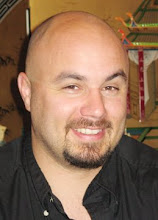
 I was thinking again the past two days about how families stay close and how we become friends and I thought of two very different kinds of time together. There are the family gatherings where we all enjoy being in a group and sharing time with each other, the kind that cements family closeness but in which there's never really time for any kind of personal closeness or intimacy, time to talk in depth with another person. Those times are what cements a personal closeness as opposed to a group identity and closeness. So often, once children leave home, find their adult friends, become immersed in careers, move away and have their own families, we only have the first kind of visit. The one-on-one or just parents and adult child kind of visit happens infrequently if at all. It happens with siblings, too, for many of us.
I was thinking again the past two days about how families stay close and how we become friends and I thought of two very different kinds of time together. There are the family gatherings where we all enjoy being in a group and sharing time with each other, the kind that cements family closeness but in which there's never really time for any kind of personal closeness or intimacy, time to talk in depth with another person. Those times are what cements a personal closeness as opposed to a group identity and closeness. So often, once children leave home, find their adult friends, become immersed in careers, move away and have their own families, we only have the first kind of visit. The one-on-one or just parents and adult child kind of visit happens infrequently if at all. It happens with siblings, too, for many of us. When I was considering this, I realized why we felt so close to Leif. He WAS with us as an individual all of his life except for his years in the army. We had him to ourselves, with time to visit, time to talk about so many things, time to be close. And that revelation suddenly brought another one. I hadn't just lost a son when he died. I lost a friend. A dear and close friend whose company I enjoyed. It was a loss in so many ways, the loss of our son, the loss of his future, the loss of the grandchildren we'd hoped to have, but it was also the loss of a friend, and I realize I've been mourning that as much as the others, without even knowing it until now. I miss my friend.
----------
These photos were taken in Old San Juan, Puerto Rico in 1991 when Leif was sixteen years old. I'm with him in the second one. When I was in San Juan a couple of weeks ago I pictured him on those streets and down by the harbor.
















